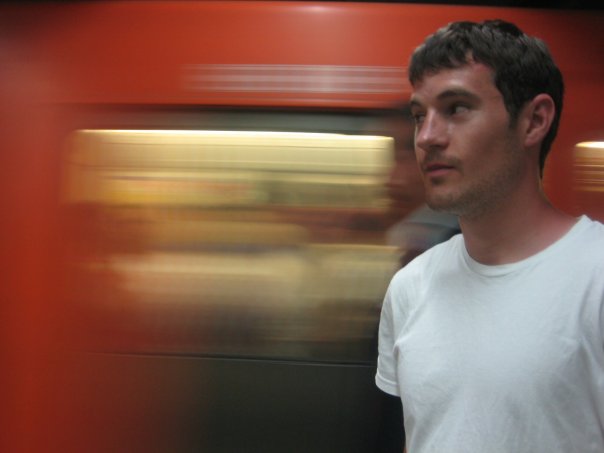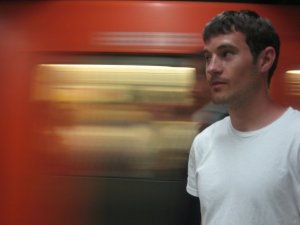Cross-posted from Next American City.
Mike Lydon is a board member of Congress for the New Urbanism in New York and founder of the Miami- and New York City-based planning firm, The Street Plans Collaborative. In 2009 he coauthored, with Andres Duany and Jeff Speck, The Smart Growth Manual, the quintessential textbook for building sustainable projects. Here Lydon talks zoning codes, cycling infrastructure, and why streets should accommodate all forms of transportation, not pit one against the other.
Q. It’s been over two years since The Smart Growth Manual was published. What are some of the more promising developments in urban planning you’ve seen since then?
A. The passing of a citywide form-based code in Miami, Fla., as well as Denver, Colo., are two very exciting things that happened just after that book came out. Smart Growth talks about different scales of development, from the windowpane all the way up to the region. But really, the nuts and bolts of what’s allowed, and how things get built over time via a zoning code, are very important to codifying smart growth. A lot of the time, you’ll find cities that have policies in the direction of walkability, smart growth, infill, density, and all these good buzzwords in the planning field, but their regulations don’t support it. In fact, in a lot of cases, those regulations make it illegal. So it’s very exciting to see cities changing out their zoning codes wholesale to ones that [are] more appropriate for the 21st century.
Another exciting trend is the rise of cycling and the livable streets movement. This is playing out in a number of different forms and in a number of different places across the country. You’re seeing increased demand for cycling and walking infrastructure. High-visibility advances like bike sharing [are] becoming very popular, and cities are striving to achieve more and more options with transportation.
Q. As a cycling advocate, what do you think is the most important step that still needs to be made so that non-cyclists can begin to see bikes as a serious means of transit?
A. It’s not just one step. It’s a series of concurrent steps that need to happen. One of the overarching things is education and improving the general sense of the law — what’s legal and how do I get around? — both from a driving perspective and a cycling perspective. When the infrastructure is designed well — and it’s designed to meet the needs of people who would like to be cycling, but are not because they’re afraid for their safety — then you begin to see big upticks in cycling.
Things like traffic enforcement, education, and outreach, and encouraging initiatives like open streets, bike sharing, bicycle events — all of these things add up to make places more bike-friendly. But if there’s not an attractive facility for people to use, one that will actually get them where they want to go, it’s hard to get a surge in cycling. Cities that are advancing the most are those that have built the most attractive infrastructure. Places like Seattle, Portland, New York City, and Boston now are seeing big, big upticks in urban cycling.
Q. Even in cities that have made huge advancements in bike infrastructure, cyclists sometimes still have a problem with authorities taking them seriously. In New York, for instance, police have busted cyclists for doing perfectly legal things, while drivers who actually strike cyclists often don’t face appropriate consequences. How do we change the conversation?
A. This is a very difficult challenge. Surveys show that the majority of New Yorkers support cycling and want more cycling infrastructure. The rolling out of the bike-share system is certainly a vote of confidence on that level. But we have a major enforcement problem. And I think there’s this false dichotomy that we have to target one versus the other: That it’s the cyclists that are making all the illegal maneuvers and being dangerous, or the motor vehicles that are doing it.
What we’re talking about are safer streets for everybody, and how that’s accomplished is by making the changes that make cycling easier. What that really means is not necessarily just accommodating doing things on a bike, but narrowing the number of lanes overall, widening sidewalks, shortening pedestrian crossing times, making cyclists and pedestrians more visible — all these things add up to a safer street, not just for cyclists but for people driving. Too often the point is missed that we’re really trying to make a safer city for everybody — no matter how you get around — and we start to segment these things into different modes [of transportation] that we prefer. That’s a losing proposition from the beginning. It’s got to be for all modes, not just for one.
Q. Let’s say you had unlimited resources to reconstruct a streetscape however you wanted. What would it look like?
A. It would probably have three-to-five-story buildings, maybe mixed use, pretty much built up to the edge of the sidewalk. It would have a nice, wide sidewalk with trees, benches, cafe seating. And then towards the middle, a protected bike lane facility that meets the needs of the majority — simple bike lanes don’t go quite far enough for a large population of people.
Narrow travel lanes. In Europe you’ve got buses that travel on nine-foot lanes. Here we have standards of 11-12 [feet]. Parallel parking is usually a good thing for streets, one that can create friction and slow down motorists. It also creates a barrier between people biking and people walking, not just from a comfort perspective but also from a pollution perspective: Having that buffer means you’re less close to the exhaust from passing vehicles.
Having very visible, clear crosswalks at every intersection, every corner. It sounds ridiculous that I have to say that, but you go to so many cities and that’s not the case. I’d like to see people of all ages on the street as well — a really dynamic atmosphere where you feel comfortable doing any number of different activities.
Q. What suggestions would you have for cities that are a little newer and were built to accommodate automobiles rather than walking? What are the next steps that cities like Phoenix can take?
A. You’ve got to show people the possibilities. It’s so hard to imagine what a typical street in Phoenix could become for anyone who lives there. It’s built for cars, you travel through it in a car, and it’s very hard to reach out of that bubble. But there are ways to do it, and it’s not just showing [residents] a fancy rendering or a nice photoshopped drawing. We’re finding out that this doesn’t sell the vision as much as it does to actually make a change on the street in a very short period of time. So if you can show someone the aspects or characteristics of what a block looks like after adding those bike lanes temporarily, show what a street looks like when it has parallel parking, bring more activity to the edge of a sidewalk … it gives people an experience that they can’t get from a rendering or an image. We’re finding, as we incorporate more of those techniques into our implementation plans, that [they have] a huge positive effect on building support and interest, continuing the conversation, and chipping away at the large-scale problem.





